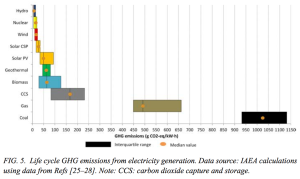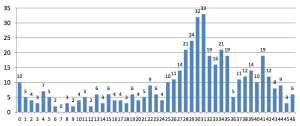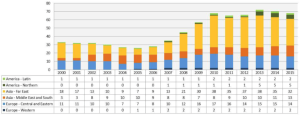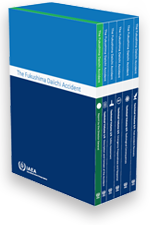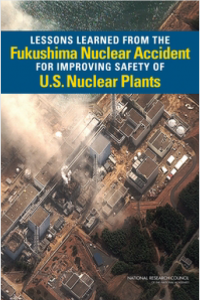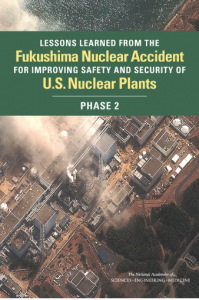Peter Lobner
In September 2016, the International Atomic Energy Agency (IAEA) published a report entitled, “Climate Change and Nuclear Power 2016.” As described by the IAEA:
“This publication provides a comprehensive review of the potential role of nuclear power in mitigating global climate change and its contribution to other economic, environmental and social sustainability challenges.”
An important result documented in this report is a comparative analysis of the life cycle greenhouse gas (GHG) emissions for 10 electric power generating technologies. The IAEA authors note that:
“By comparing the GHG emissions of all existing and future energy technologies, this section (of the report) demonstrates that nuclear power provides energy services with very few GHG emissions and is justifiably considered a low carbon technology.
In order to make an adequate comparison, it is crucial to estimate and aggregate GHG emissions from all phases of the life cycle of each energy technology. Properly implemented life cycle assessments include upstream processes (extraction of construction materials, processing, manufacturing and power plant construction), operational processes (power plant operation and maintenance, fuel extraction, processing and transportation, and waste management), and downstream processes (dismantling structures, recycling reusable materials and waste disposal).”
The results of this comparative life cycle GHG analysis appear in Figure 5 of this report, which is reproduced below (click on the graphic to enlarge):
You can see that nuclear power has lower life cycle GHG emissions that all other generating technologies except hydro. It also is interesting to note how effective carbon dioxide capture and storage could be in reducing GHG emissions from fossil power plants.
You can download a pdf copy of this report for free on the IAEA website at the following link:
http://www-pub.iaea.org/books/iaeabooks/11090/Climate-Change-and-Nuclear-Power-2016
For a link to a similar 2015 report by The Brattle Group, see my post dated 8 July 2015, “New Report Quantifies the Value of Nuclear Power Plants to the U.S. Economy and Their Contribution to Limiting Greenhouse Gas (GHG) Emissions.”
It is noteworthy that the U.S. Environmental Protection Agency’s (EPA) Clean Power Plan (CPP), which was issued in 2015, fails to give appropriate credit to nuclear power as a clean power source. For more information on this matter see my post dated 2 July 2015,” EPA Clean Power Plan Proposed Rule Does Not Adequately Recognize the Role of Nuclear Power in Greenhouse Gas Reduction.”
In contrast to the EPA’s CPP, New York state has implemented a rational Clean Energy Standard (CES) that awards zero-emissions credits (ZEC) that favor all technologies that can meet specified emission standards. These credits are instrumental in restoring merchant nuclear power plants in New York to profitable operation and thereby minimizing the likelihood that the operating utilities will retire these nuclear plants early for financial reasons. For more on this subject, see my post dated 28 July 2016, “The Nuclear Renaissance is Over in the U.S.” In that post, I noted that significant growth in the use of nuclear power will occur in Asia, with use in North America and Europe steady or declining as older nuclear power plants retire and fewer new nuclear plants are built to take their place.
An updated projection of worldwide use of nuclear power is available in the 2016 edition of the IAEA report, “Energy, Electricity and Nuclear Power Estimates for the Period up to 2050.” You can download a pdf copy of this report for free on the IAEA website at the following link:
Combining the information in the two IAEA reports described above, you can get a sense for what parts of the world will be making greater use of nuclear power as part of their strategies for reducing GHG emissions. It won’t be North America or Europe.
